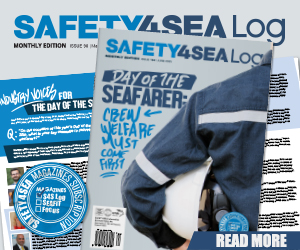BSEE has published a safety alert to highlight recent incidents caused by adverse weather conditions and to emphasize the importance of implementing enhanced safety measures.
The Bureau of Safety and Environmental Enforcement (BSEE) recently investigated an incident where rough sea conditions posed sudden and unpredictable risks. In addition, BSEE received multiple incident reports in November and December 2024, identifying adverse weather conditions as the primary contributing factor. This safety alert serves as a reminder to establish and clearly communicate enhanced safety measures in anticipation of adverse weather.
An offshore worker on a deepwater drilling rig was heading to assist personnel in pressure washing operations. Observing the job had been completed and the team was wrapping up, the worker walked to the stern of the vessel toward the fantail to observe waves from the handrails. While standing at the handrail, a wave crashed over, knocking the worker back approximately 20 feet, potentially coming into contact with a bollard before landing at the base of the stairs. As a result, the worker sustained a fracture to the right upper leg femur.

On the morning of the incident, sea conditions were noticeably worsening. The aft deck (stern) was secured, and crane operations were suspended in response. Despite not having any active duties or assignments in that location, the offshore worker made a personal decision to access the stern to observe the water. This decision put the worker in a location vulnerable to the impact of the wave, which directly led to their injury. The rough sea conditions were the primary contributing factor, as they presented sudden and unpredictable risks. The root cause of this incident was the weather.
Additional incidents reported to BSEE in November and December 2024, where the root cause was determined to be weather:
- An offshore worker was attempting to swing from a boat landing to the back of a motor vessel when a large wave came through and pushed the stern of the boat under the boat landing. When the stern came loose, the worker lost balance and fell on the deck, injuring a knee.
- Operators were transferring personnel from a motor vessel onto a production platform. During the transfer, a rogue sea swell caused the boat to collide with the boat landing, damaging the west side of the facility.
- A motor vessel was preparing to use dynamic positioning (DP) to offload personnel onto a facility. During this process, the vessel temporarily lost its DP capability, and a sea swell pushed it toward the boat landing. As a result, the bulwark and jump deck were pushed beneath the personnel landing area on the facility, causing damage to the vessel.
BSEE recommends that operators and their contractors, where appropriate, do the following:
- Determine if there should be restricted areas on the facility during adverse weather conditions and communicate these locations to all personnel during pre-tour and other relevant meetings.
- Place additional restricted access signs and/or hard barriers around the facility based on weather-related restrictions set by the offshore facility leadership.
- Ensure personnel are aware of hazards from unlikely sources that could be present during extreme weather events with unpredictable conditions (seas, winds, etc.).
- Determine when non-critical work should be suspended due to unfavorable conditions to prioritize safety.
- Assess medical evacuation capabilities and challenges for and during adverse weather conditions.































































